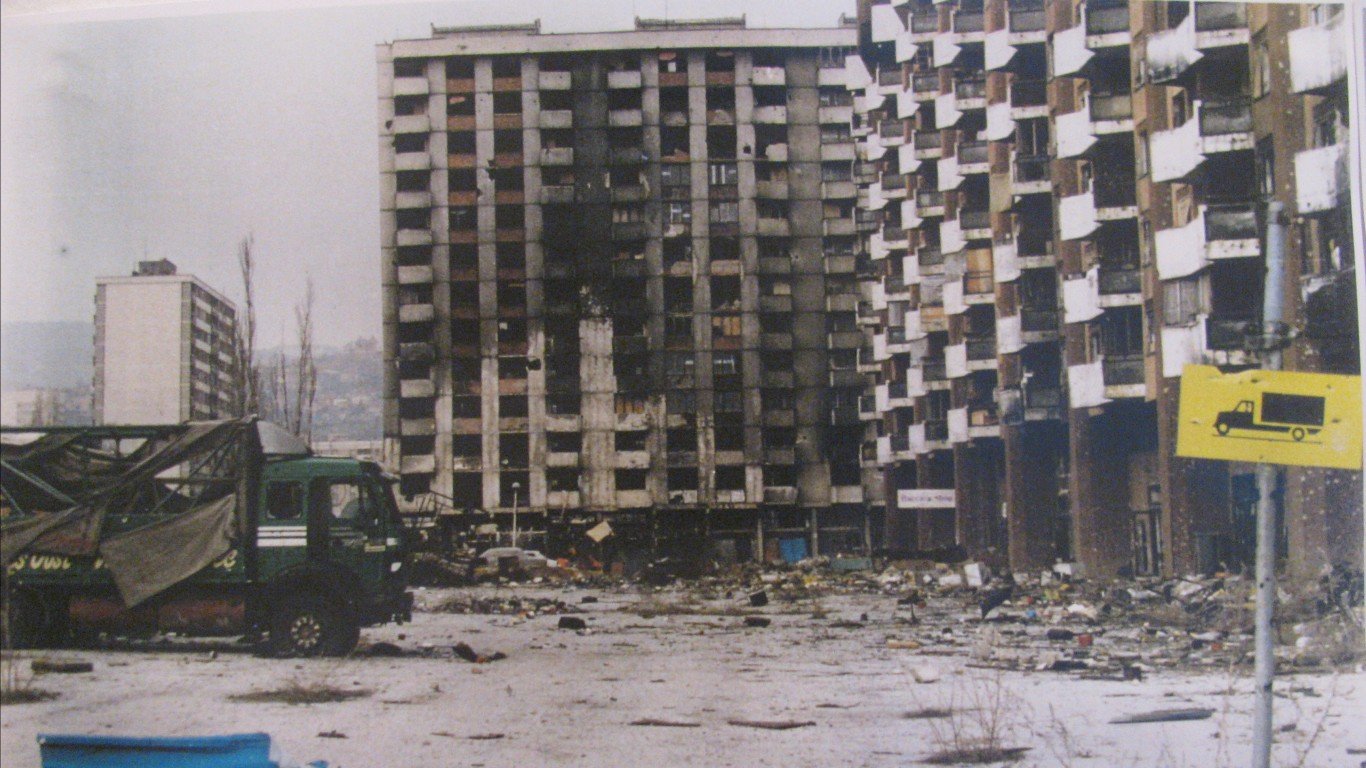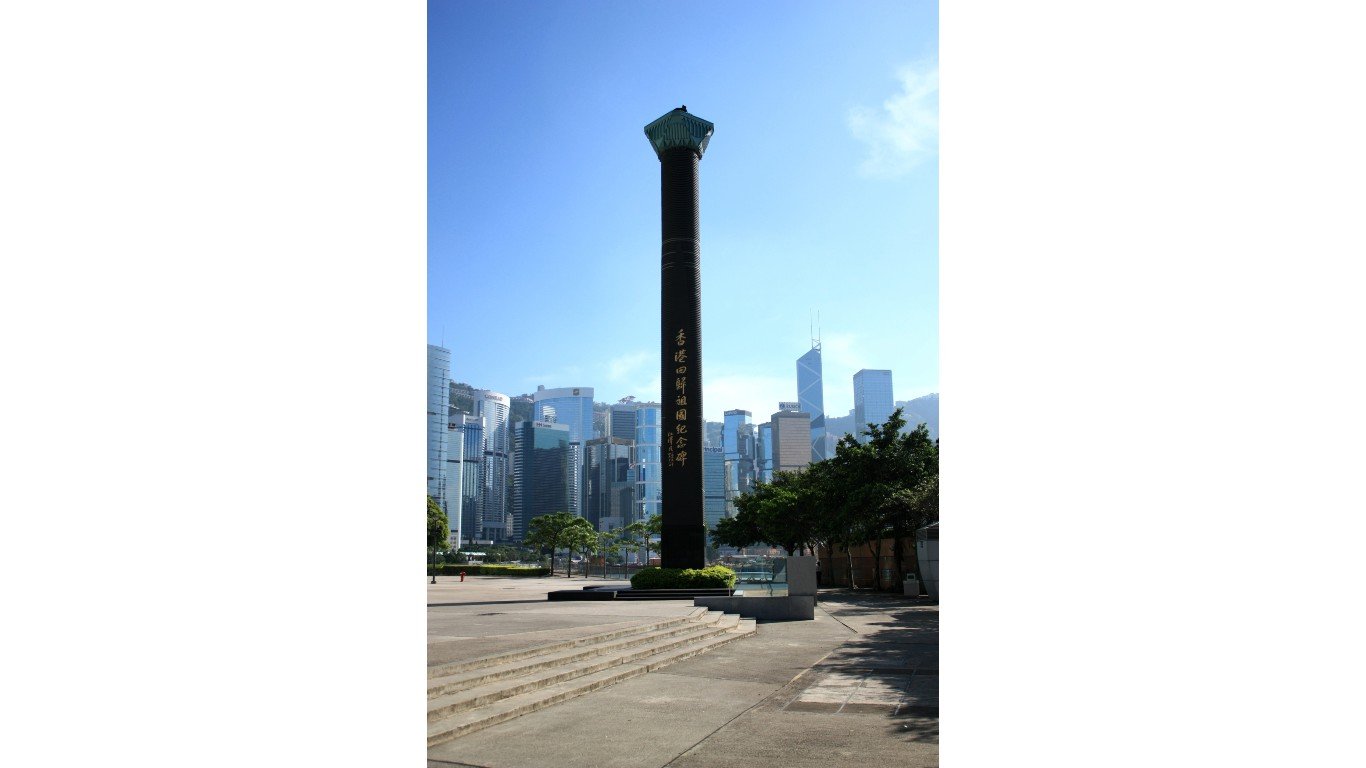
1987
> Doomsday clock position: 3 minutes to midnight
> Nuclear tests: 47
Standing before the Brandenburg Gate in Berlin, Reagan declares, “Mr. Gorbachev, tear down this wall!”
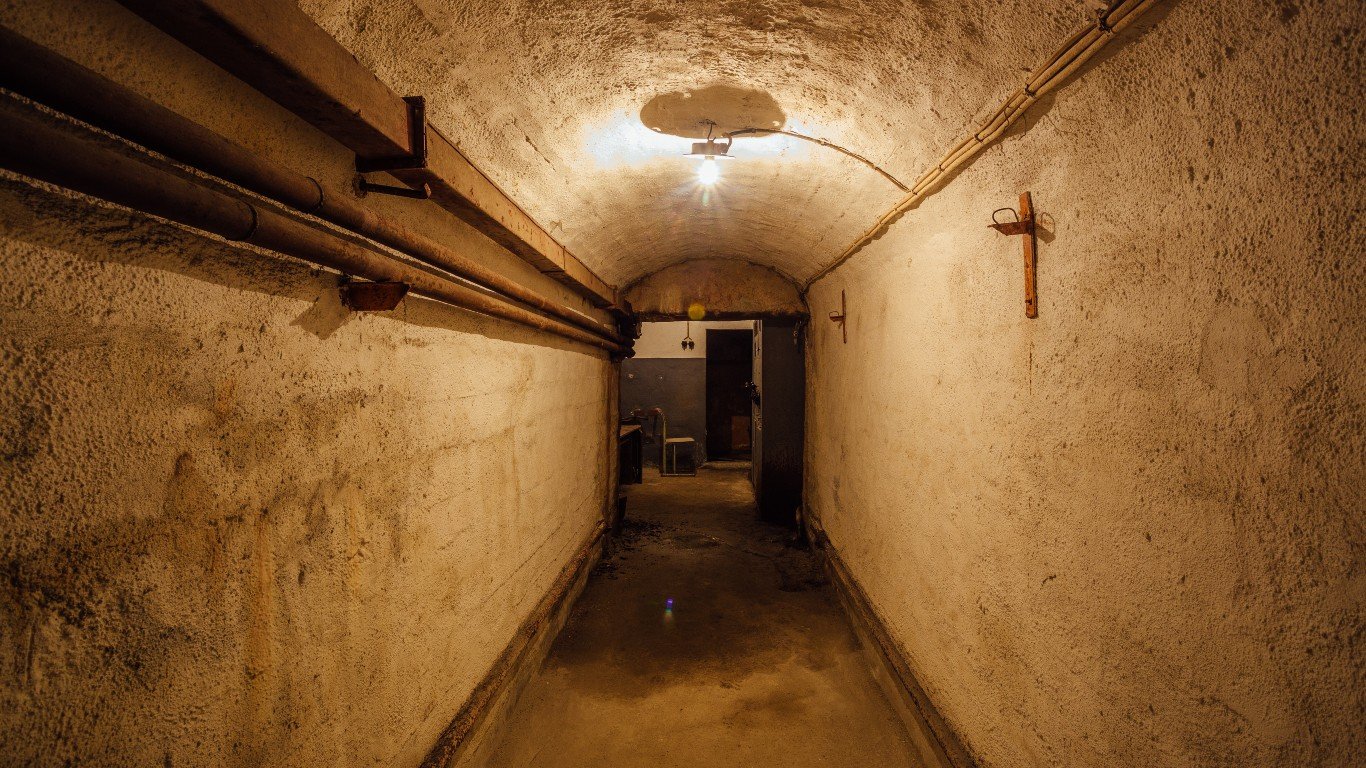
1988
> Doomsday clock position: 6 minutes to midnight
> Nuclear tests: 40
After the signing of the historic Intermediate-Range Nuclear Forces Treaty, the United States and Soviet Union agreed to ban a whole category of nuclear weapons. The leadership shown by President Ronald Reagan and Soviet Premier Mikhail Gorbachev makes the treaty a reality, but public opposition to U.S. nuclear weapons in Western Europe inspires it, the Bulletin notes as it moves back the clock three minutes away from midnight.
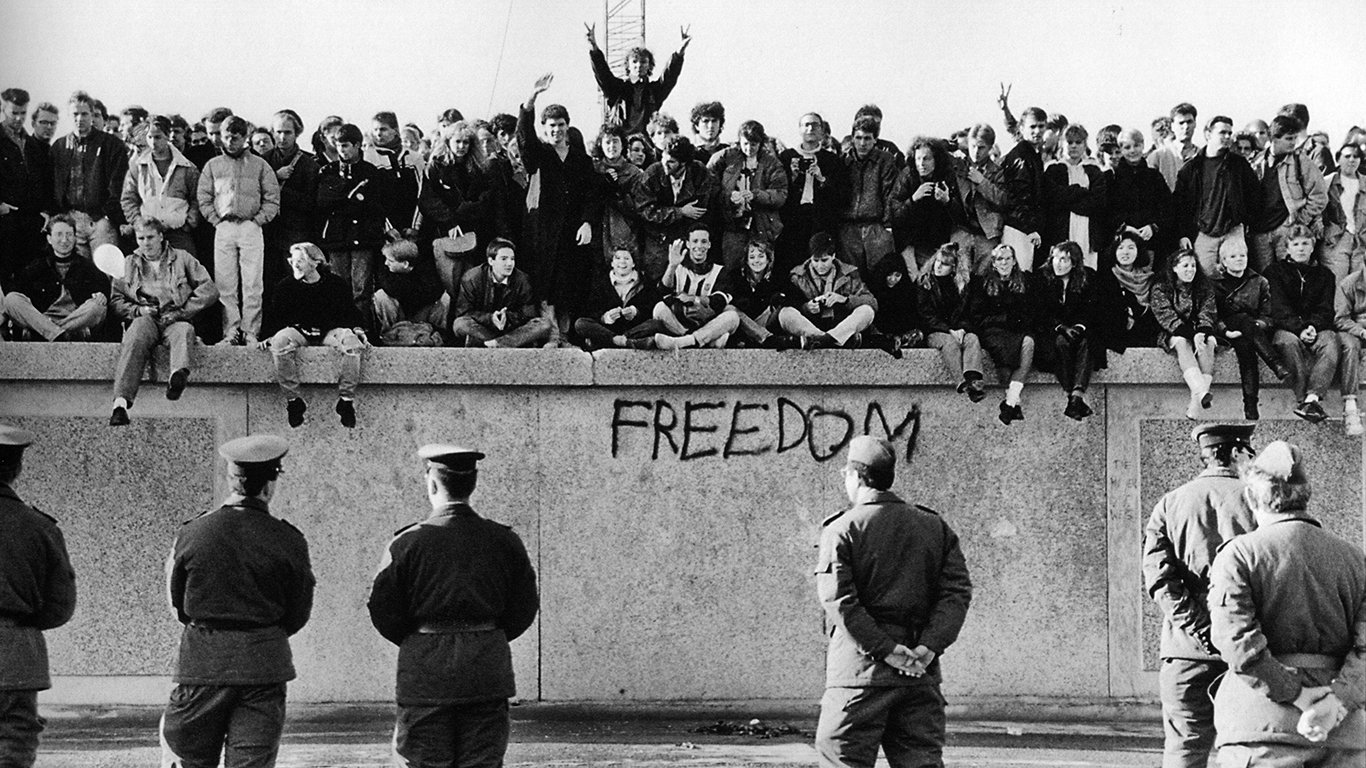
1989
> Doomsday clock position: 6 minutes to midnight
> Nuclear tests: 28
On Nov. 9, the Berlin Wall finally falls, as Hungary, Czechoslovakia, Bulgaria, Rumania, and Poland break from their communist governments. East and West Germany would be reunited a year later.
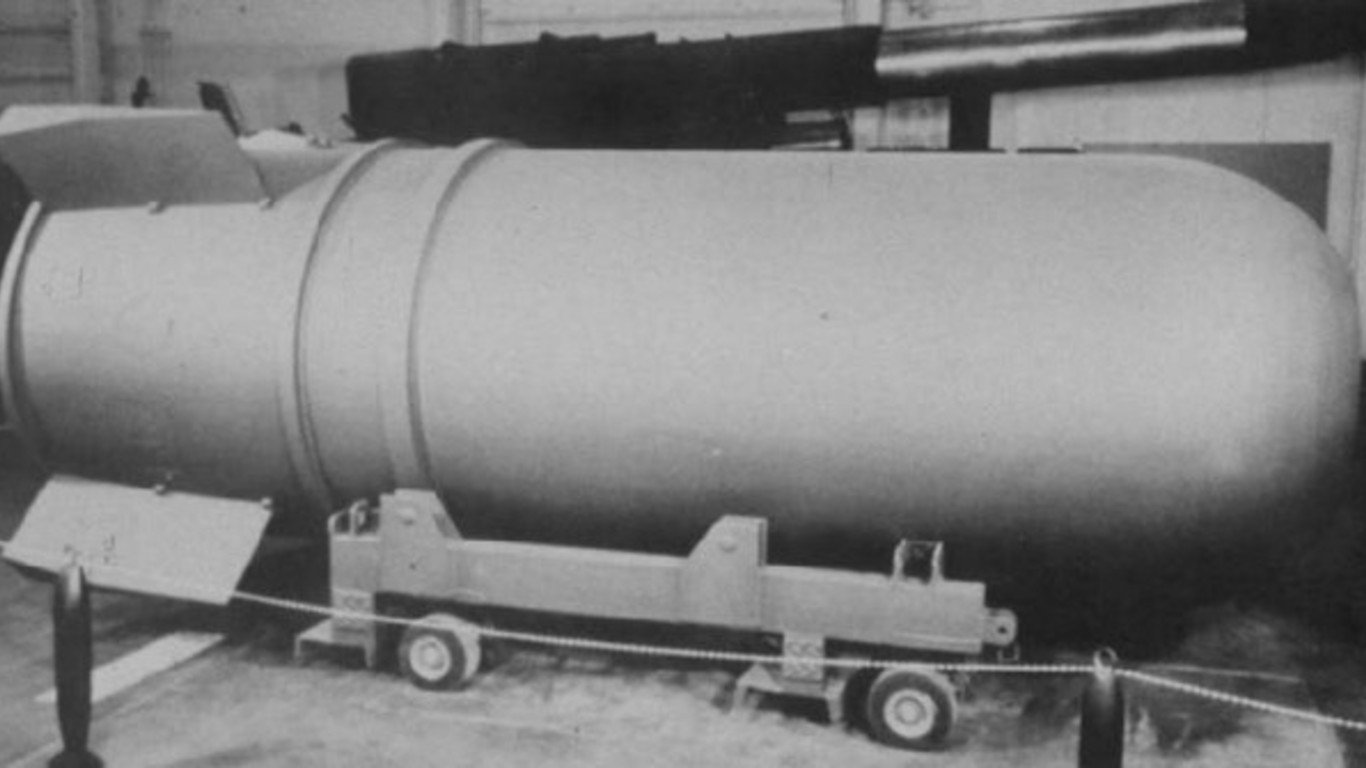
1990
> Doomsday clock position: 10 minutes to midnight
> Nuclear tests: 18
“We are poised to bend the arc of history toward a world free of nuclear weapons,” is the Bulletin’s assessment as it moves the clock four more minutes back from midnight. Talks between Washington and Moscow for a follow-on agreement to the Strategic Arms Reduction Treaty are nearly complete, and more negotiations for further reductions in the U.S. and Russian nuclear arsenal are already planned.
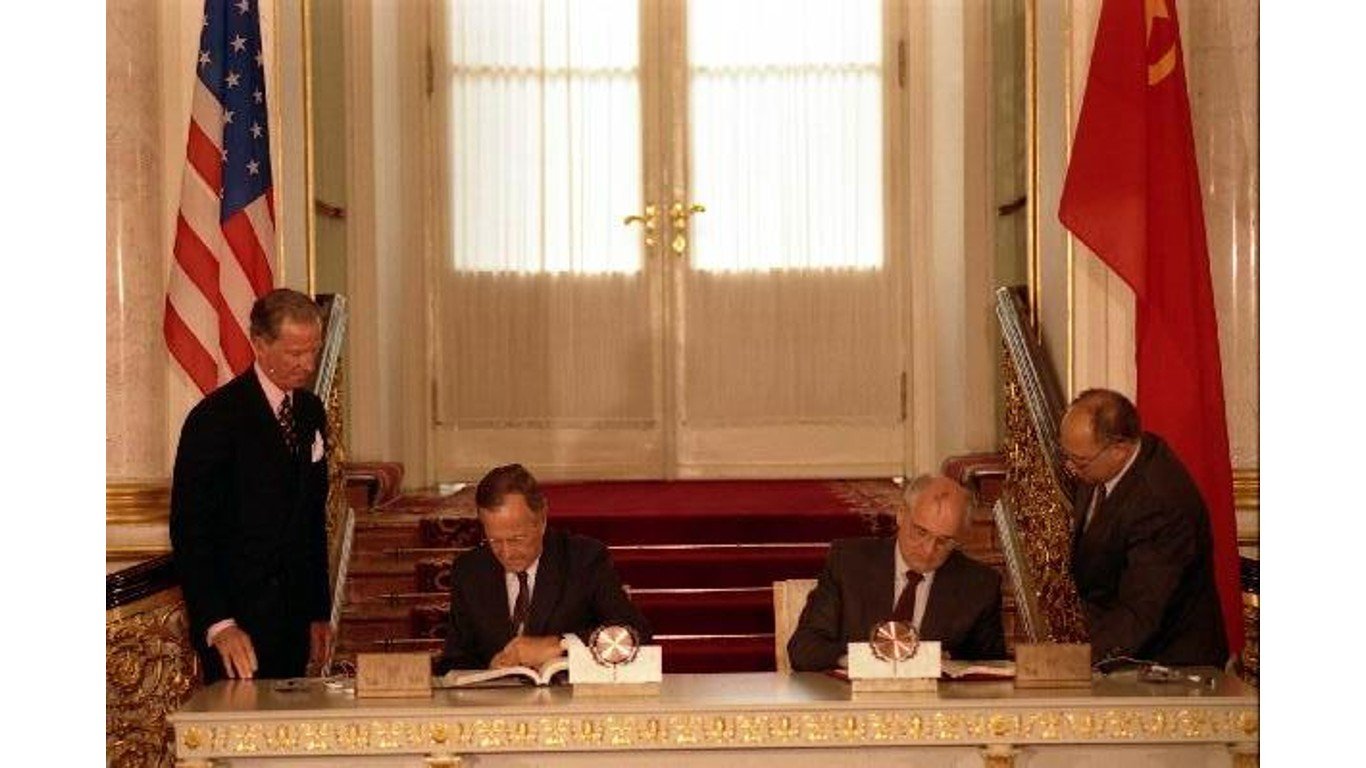
1991
> Doomsday clock position: 17 minutes to midnight
> Nuclear tests: 14
With the Cold War officially over, the United States and Russia begin making deep cuts to their nuclear arsenals. The Strategic Arms Reduction Treaty greatly reduces the number of strategic nuclear weapons deployed by the two former world power adversaries. “The illusion that tens of thousands of nuclear weapons are a guarantor of national security has been stripped away,” the Bulletin declares as it moves the clock to its furthest position from midnight ever.
1992
> Doomsday clock position: 17 minutes to midnight
> Nuclear tests: 8
The breakup of Yugoslavia leads to the Bosnia War, a conflict between the Republic of Bosnia and Herzegovina and Bosnian Serbs and Bosnian Croats entities within Bosnia and Herzegovina,
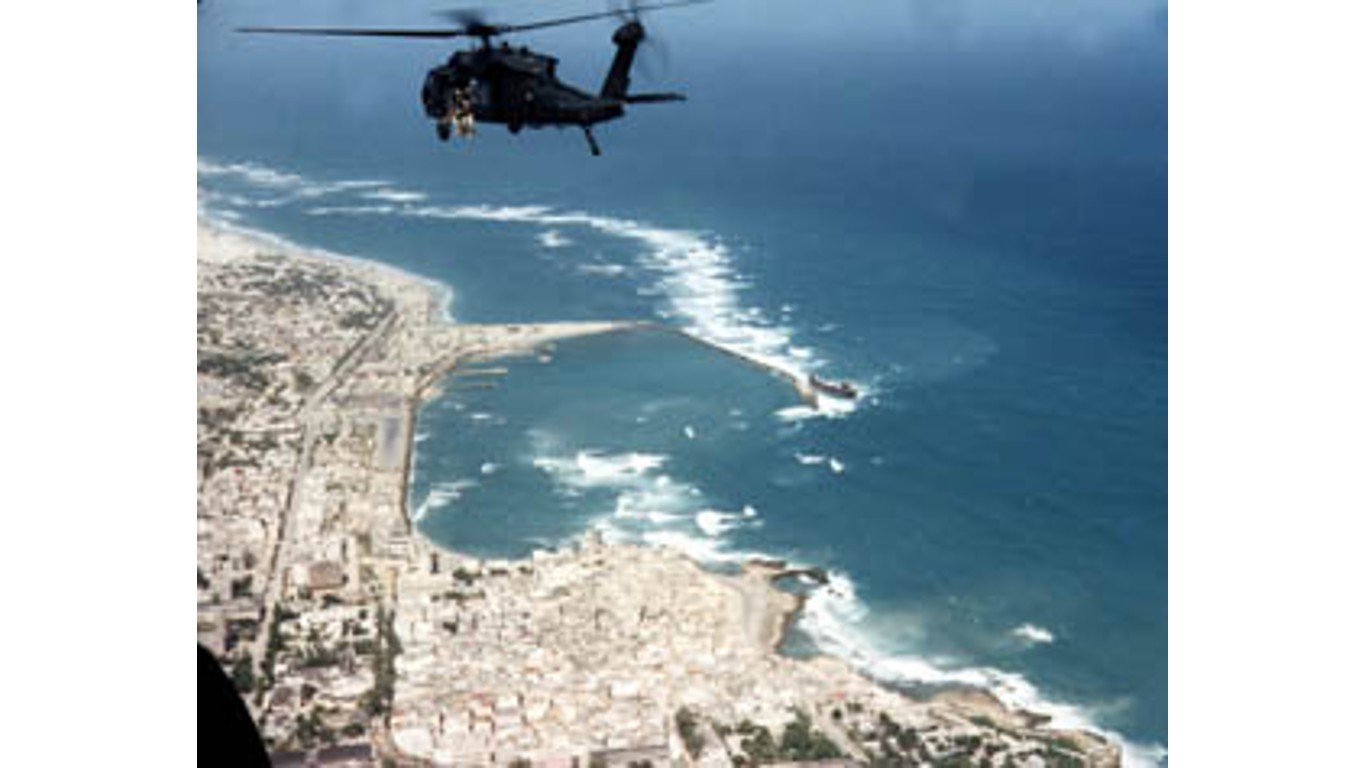
1993
> Doomsday clock position: 17 minutes to midnight
> Nuclear tests: 1
In a firefight with rebels in Somalia, 18 U.S. soldiers die after their Black Hawk helicopters are shot down. The troops are sent to quell a rebellion within the country.
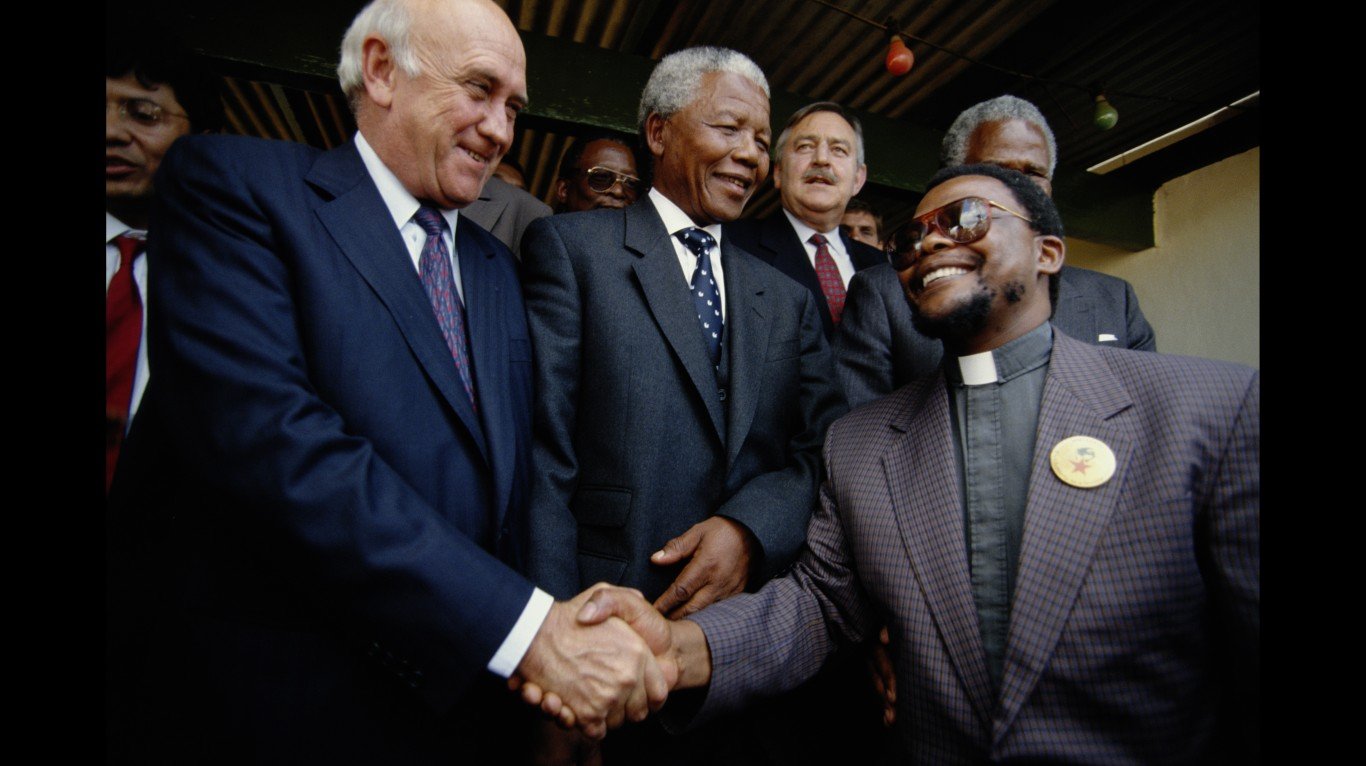
1994
> Doomsday clock position: 17 minutes to midnight
> Nuclear tests: 2
After years of apartheid, Nelson Mandela becomes the first Black president of South Africa.

1995
> Doomsday clock position: 14 minutes to midnight
> Nuclear tests: 7
> Doomsday clock position: 14 minutes to midnight
> Nuclear tests: 3
Hopes for a post-Cold War peace and a renouncing of nuclear weapons fade as more than 40,000 nuclear weapons remain worldwide. Hardliners in the U.S. still see Russia as a threat. There is also concern that terrorists could exploit poorly secured nuclear facilities in the former Soviet Union, the Bulletin warns and moves the clock three minutes closer to midnight.
strong>1996
The Taliban, a militant Islamic group, first comes to power in Afghanistan.
1997
> Doomsday clock position: 14 minutes to midnight
> Nuclear tests: 0
After 99 years, Britain turns Hong Kong over to China. China agrees to maintain the city’s freedoms not permitted in the rest of the country.
